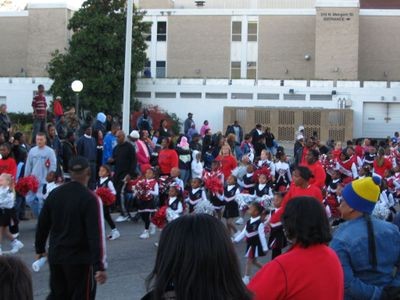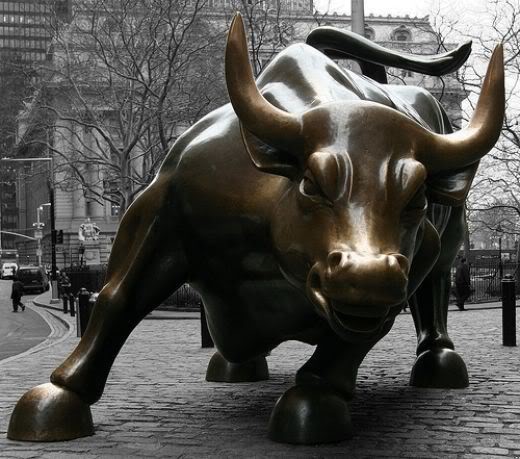Charging Bull Wikipedia the free encyclopedia
Post on: 16 Март, 2015 No Comment

§ Description [ edit ]
A poster showing a ballerina on the Charging Bull to promote the Occupy Wall Street movement
In Outdoor Monuments of Manhattan: A Historical Guide. Dianne Durante describes the sculpture:
The Bull ’s head is lowered, its nostrils flare, and its wickedly long, sharp horns are ready to gore; it’s an angry, dangerous beast. The muscular body twists to one side, and the tail is curved like a lash: the Bull is also energetic and in motion. [ 5 ]
The bronze color and hard, metallic texture of the sculpture’s surface emphasises the brute force of the creature. The work was designed and placed so that viewers could walk around it, which also suggests the creature’s own movement is unrestricted — a point reinforced by the twisting posture of the bull’s body, according to Durante.
Charging Bull. then, shows an aggressive or even belligerent force on the move, but unpredictably. [. ] [I]t’s not far-fetched to say the theme is the energy, strength, and unpredictability of the stock market. [ 5 ]
That bull is one of an edition of five. … I’m hoping the other four will be going to cities all over the world, whenever somebody buys them. [ 6 ]
In 2010, a similar Charging Bull sculpted by Di Modica, which looks younger and stronger, was installed in Shanghai. called Bund Bull. and in 2012 one was placed on Het Beursplein in Amsterdam. [ 7 ]
§ History [ edit ]
§ Construction and installation [ edit ]
Di Modica spent some $360,000 to create, cast, and install the sculpture following the 1987 stock market crash as a symbol of the strength and power of the American people. [ 2 ] The sculpture was the artist’s idea, not the city’s. In an act of guerrilla art , he trucked it to Lower Manhattan and on December 15, 1989, installed it beneath a 60-foot Christmas tree in the middle of Broad Street in front of the New York Stock Exchange as a Christmas gift to the people of New York. That day, crowds came to look at the bull, with hundreds stopping to admire and analyze the gift as Di Modica handed out copies of a flier about his artwork. [ 2 ]

The police seized the sculpture and placed it into an impound lot. The ensuing public outcry led the New York City Department of Parks and Recreation to install it two blocks south of the Exchange in the plaza at Bowling Green with a ceremony on December 21, 1989. It faces up Broadway. [ 8 ]
§ Ownership [ edit ]
Since New York City does not own the sculpture, it has a technically temporary permit allowing it to stand on city property, but the temporary permission has lasted since 1989, when city officials said the new location would not be permanent. [ 11 ] Art on loan is usually limited to a year’s display. Although the city does not buy art, it accepts donations. [ 12 ] A writer in the New York Daily News wrote in 1998 that the statue’s placement was beginning to look a mite permanent. [ 6 ] According to an article in Art Monthly. Di Modica, the authorities, and New York public, view it as a permanent feature of Lower Manhattan. [ 13 ]














